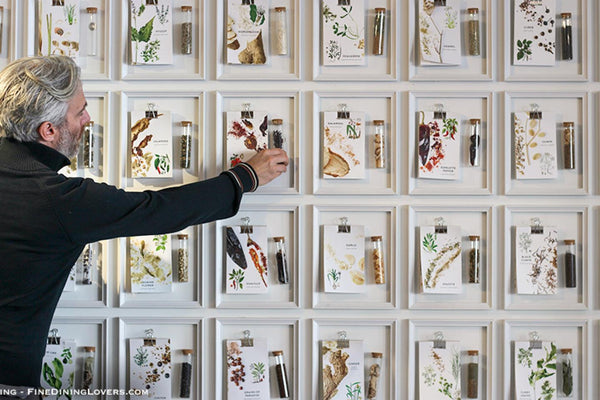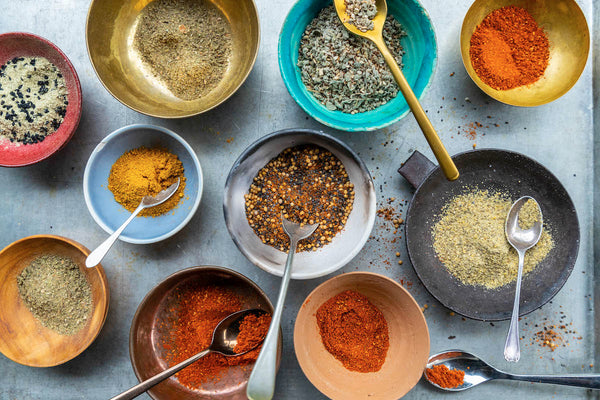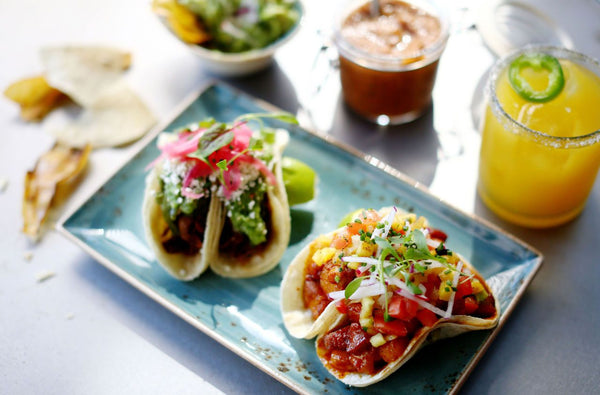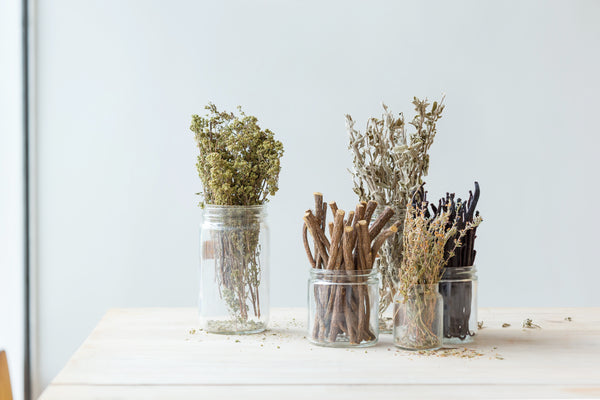This story starts, like all good things in life, with food. A bite of lamb to be precise, but not just any old bite. A fork of lamb so delicious, so tongue-seducing, I just had to know how it was made. A smokey, spicy, fruity, citrus harmony; perfectly stacked lego bricks of flavour – how? “Oh, that one,” said the chef at the end of the meal, “that one’s all about the mix. It's from my spice guy in New York.”
He wouldn’t reveal exactly what was in the mix, because, you know, “that’s a secret.” But he did tell me the spice guy’s name, Lior Lev Sercarz, and it turns out I’d probably eaten one of his blends before, perhaps more than once. In fact, it turns out that anyone with any serious dining behind them in New York had probably enjoyed one of the 44-year-old’s specially crafted blends of spices.
A ‘master spice blender’ tucked away somewhere in the shadows of NYC. What would he look like? What would the store look like? How would it smell? A dark room? Some off-shoot doorway inside a market? Piles of ground spices? Turmeric yellow and chilli red hands? All of this comes to mind – but none of it applies to Sercarz.
In fact, nothing about Sercarz or his business are what you would imagine. The store doesnt stink, though people can be heard sneezing in the back – an oocupantional hazard as a spice blender – and the blends don’t come scooped from the top of the pile. They’re perfectly packaged in air tight jars. Each one is labelled, a name followed by a number, a tradition he’s kept up since he produced his first ever mix. “I stopped the numbers at 41, but I still name them all,” he says, “they’re my babies.”
Isphahan N.1 (limon omani, cardamom and spices), Ayala N.16 (rosemary, pepper, and salt – perfect for crunchy crusts on meat.) Izak N.37 (a harissa-inspired dry blend – good on pizza!). He says it’s rare he makes a blend for himself nowadays, “I mean running down from the shower with an idea in my head,” but the excitement of those early years evidently remains. “It’s such a personal experience, each and every one of them. Sometimes it takes just 10 minutes and sometimes it takes days.”

He learned about spices while training as a chef under Olivier Roellinger at the three Michelin-starred Maisons de Bricourt in Cancale, France. Roellinger was one of the early French chefs to incorporate largely unused international spices alongside luxurious, classical French cuisine – often travelling by boat on voyages to bring back new spices. His passion for new flavours led Sercarz to focus his time with Roellinger honing his understanding of spice, how it's sourced, mixed and combined.
“He didn’t just teach me, he forced me to do my own research and studies. I had to taste things before we had a conversation. But it went way beyond food, it was religion, culture, history and economics – all of these things that are the spice world. I don’t think there’s a day where Olivier’s name doesn’t come up in some way.”
When Sercarz decided to step away from over 10 years working as a chef to open the spice shop, the first thing he did was fly back to Cancale to ask Roellinger’s opinion, to seek his blessing. “He stopped me speaking within about a few minutes and said, ‘I don’t need to hear more, I think you know what you need to do’.”

Shortly after this vist, while working on new blends from his stinky apartment, Sercarz received the call that started it all. It was chef Laurent Tourondel and he wanted Sercarz to produce some exclusive blends for him. After some back and forth with Tourondel on exact recipes, the duo agreed on six different blends, and since then the grinder hasn't stopped spinning.
Today they are 130 different blends, 50 of them unique and exclusive collaborations, opportunities where Sercarz revels in combining unique spices with uncommon products. The minty, bitter assault of Cubeb – a berry from Indonesia – added to the base for a blend of new gin. A fennel dusting produced for the spike in some caramel popcorn. Indian spices blended perfectly to cut through a fatty slather of coconut ice cream.
“Technique wise it’s pretty simple, even equipment wise it’s pretty simple,” he explains. “The steps to do a blend are also very simple and easy - what makes a better one is the thought process behind it. The ingredients, the sourcing, quality, terroir. Talking to farmers, how they produce – why is their cardamon different to the next one? The method that they’re harvesting, drying or sorting. I approach spice like sourcing ingredients the same way as cooking. There’s a relationship that still exists in our industry of personal connection with the farmer, broker, and trader. I can not be in India for cumin harvest, so I really rely on these people.”

After gaining some notoriety in the world of high end cuisine and trickling down the restaurant chain, the business now sells to around 120 different restaurants and Sercarz is intent on making products for everyone, teaching classes in the store and pushing the message that spices can and should be used more daringly, “It’s why we never write ‘this is for meat’ or ‘this is for fish’ on the label. We want people to taste the spices and decide what they want to use it with.”
Unsurprisingly, Sercarz says many chefs working in professional kitchens are totally unaware of many of the spices they could be using, something he feels is unfortunately linked to the misunderstanding of spices and how they can be used. “It’s not reserved for a certain group of people or certain ethnic culture, spices are for everyone.”
“Spice takes food from a 2D to a 3D level. Food, for the most part, should be seasoned. We embrace this concept that salt and pepper are ok, they’re a commodity, they’re in every kitchen, but for some reason we left these 200 other spices on the side – like these are only for Indians, Pakistanis, Turkish and Chinese. Why?”
Source












